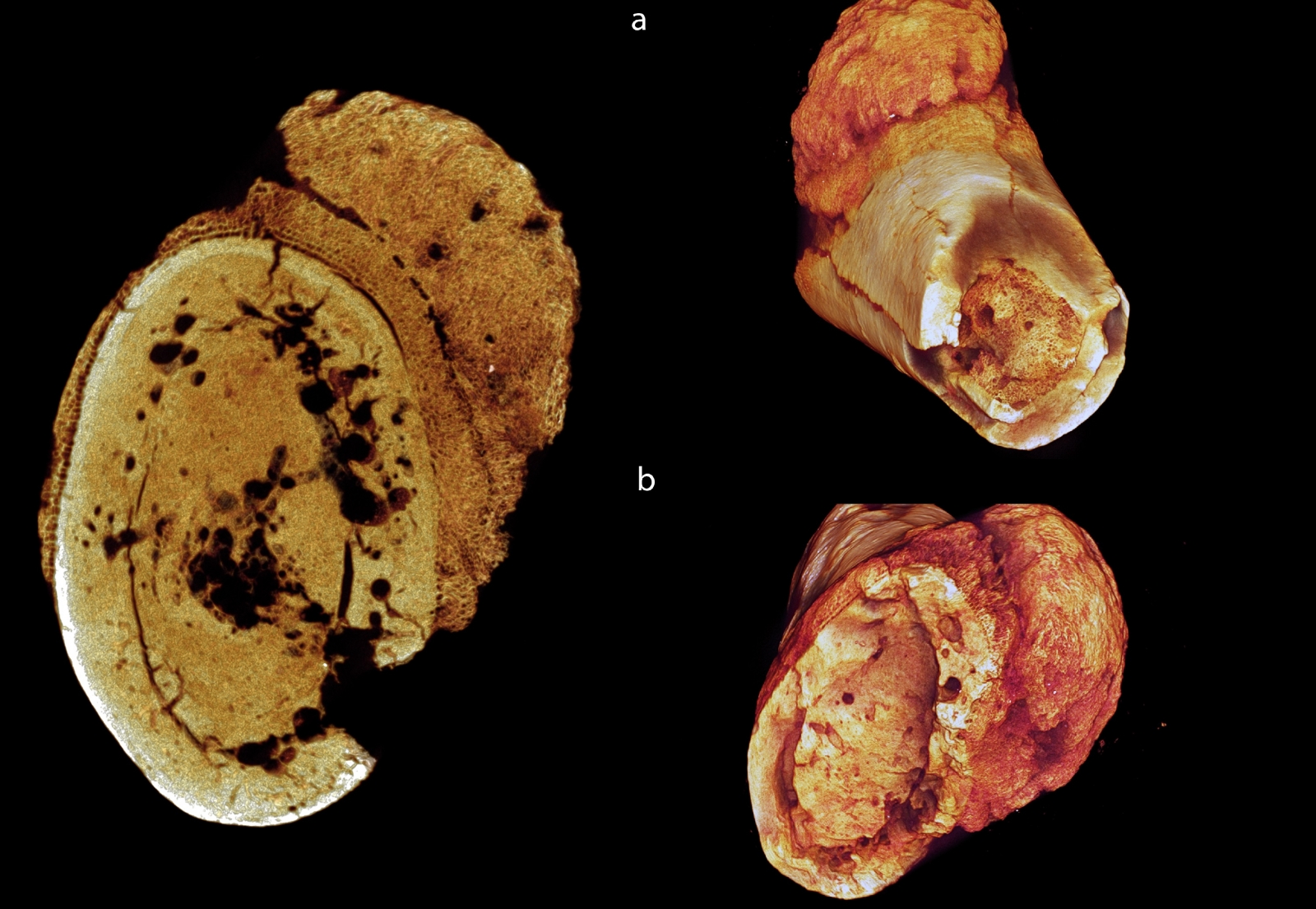Most ancient cancer case discovered in 1.7 million-year-old hominin
The earliest case of cancer was discovered in the foot bone of a mystery hominin species.
The oldest known case of malignant cancer in an early human species has been discovered in a 1.7 million-year-old fossil in South Africa. The find pushes back the recorded history of the disease over 1.5 million years – the previous oldest case was a benign growth found in the rib of a Neanderthal that lived 120,000 years ago. The earliest case of malignant cancer was far earlier, with cases recorded from ancient Egypt some 5,000 years ago.
The cancer and bony tumour was discovered in a foot bone found at the archaeological site of Swartkrans (about 20 miles from Johannesburg), an area extremely rich in hominin remains. The team, led by scientists from the University of the Witwatersrand, found the cancer in the toe using advanced 3D imaging through CT scans.
Publishing their findings in the South African Journal of Science, the team identified the cancer as an osteosarcoma. This is an aggressive type of cancer normally found in younger people and is fatal if untreated. Bernhard Zipfel, one of the study's authors, said: "Due to its preservation, we don't know whether the single cancerous foot bone belongs to an adult or child, nor whether the cancer caused the death of this individual, but we can tell this would have affected the individual's ability to walk or run. In short, it would have been painful."


The team was not able to establish which species of hominin – a group including modern and extinct human species and our immediate ancestors – the foot bone belonged to. However, they said it clearly that of an early human ancestor.
Cancer cases are extremely rare in the human fossil record, leading some to suggest it is a modern man-made disease. However, these findings indicate this is not the case, potentially showing the prevalence is the result of our extended lifespans and lifestyles.
"The expression of malignant osteosarcoma in the Swartkrans specimen indicates that while the upsurge in malignancy incidence is correlated with modern lifestyles, there is no reason to suspect that primary bone tumours would have been any less frequent in ancient specimens," they wrote. "Such tumours are not related to lifestyle and often occur in younger individuals. As such, malignancy has a considerable antiquity in the fossil record, as evidenced by this specimen."

In addition to the toe bone, researchers also announced the discovery of a benign tumour in two million-year-old fossil found in Malapa, South Africa. The neoplasm was found in the vertebrate of an Australopithecus sediba (well known for the famous 'Lucy' specimen), who would have been around 12-years-old when they died.
Patrick Randolph-Quinney, lead author of this study, said: "The presence of a benign tumour in Australopithecus sediba is fascinating not only because it is found in the back, an extremely rare place for such a disease to manifest in modern humans, but also because it is found in a child. This, in fact, is the first evidence of such a disease in a young individual in the whole of the fossil human record."
Lee Berger, who worked on both studies, said: "Not only has there been an assumption that these sorts of cancers and tumours are diseases of modernity, which these fossils clearly demonstrate they are not, but that we as modern humans exhibit them as a consequence of living longer, yet this rare tumour is found in a young child. The history of these types of tumours and cancers is clearly more complex than previously thought."
© Copyright IBTimes 2025. All rights reserved.






















